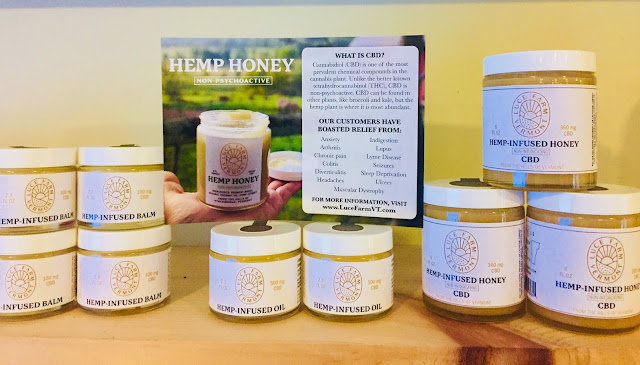St. Croix Farm Tour, best practices in the field, best meat on your plate
 As we were warned before beginning our tour of St. Croix Farm in Valley Falls, farm owner John Moore could talk for hours about grasses.
As we were warned before beginning our tour of St. Croix Farm in Valley Falls, farm owner John Moore could talk for hours about grasses.
He did talk about grass. A lot. And every word was fascinating.
The picturesque fields are green, but an attempt to count the types of grasses and plants quickly showed a landscape rich in many, many varieties. Most I'd heard of before and never thought much about: Crab grass, bedstraw, dandelion, clover, violets, burdock....alone they may not seem so impressive, but together, they weave a nutritionally dense diet for the cows.
More fascinating? We learned that the underground structure of roots connects with mycorrhizae, where plants can actually share nutrients! (Sorry if this is not new info to you! I'm still super excited about it!) You can read a little more about it here.
We watched as the herd was let into a new field for "first bite" of new "teenage" grasses, which like teenagers, have lots of energy. Every step through the process of feeding the cows is carefully planned and executed.
Some fields will be allowed to go to seed, further strengthening the growth and density.
In some years, the fields may have chickens in them, instead supplying plenty of nitrogen to the ground below. It's a careful dance the Moores do, satisfying to their souls, beneficial to the cows' health and creating an exceptional product.
There's more than 700 acres on St. Croix Farm. A peek on Google Earth shows a patchwork of greenery, hard work and the cows, delightfully entering a new field as the satellite snagged the photo.
A snapshot of feed lots in the midwest shows a dishearteningly different view.
While the cows are outside in the sunshine in those feedlots, they certainly are not enjoying the life the St. Croix cows are afforded.
There are arguments on both sides of whether grains should be fed to cattle. Regardless of your opinion, for taste or ethics, one thing is true: A cow can also be raised solely in a barn, never seeing daylight and if it's fed a diet of grass, it can be labeled as "grass-fed, grass-finished."
That's another reason to head to Google and search for your suppliers.
While I make every attempt at Old Saratoga Mercantile to research the farmers, visit their property and do my homework on the slaughterhouses and butchers they are using, Google Earth is one tool in easy reach for everyone.
I'm lucky to have connected with more than 100 farmers, growers, suppliers, etc., doing things the right way right here in our area, and especially thankful for people like them for working with me, opening their doors and helping us all learn alongside them.





Comments
Post a Comment